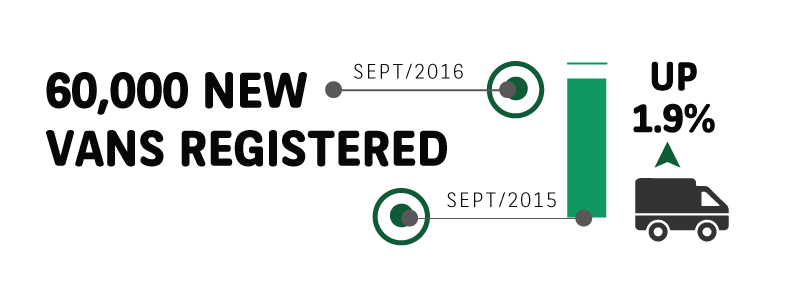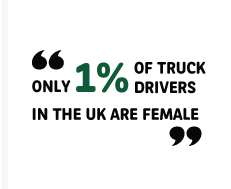
The UK’s commercial vehicles sector is in good health. Demand for the new 66-plate has remained strong with nearly 60,000 new vans registered in September alone – that’s a moderate 1.9 percent increase on 2015.
September was also the eighth consecutive month of growth for pick-up trucks with demand rising steadily by 16.4 percent. For the first time since 2007, year-to-date light commercial vehicle (LCV) registrations surpassed 290,000.
This year’s September growth helped deliver 291,714 new registrations for the first three quarters of 2016 – a year-on-year increase of 2.7 percent. A closer look at the manufacturer’s league table shows Ford way ahead in the lead, followed by VW, Vauxhall, Peugeot and finally, Citroen.
We reflect on some of the key challenges and commercial vehicle trends in 2016, as well as the outlook for 2017:
Driver shortage
A shortage of 45,000 to 50,000 skilled drivers drove up labour prices in 2016 and contributed to the diminishing number of owner-operators. There are an estimated 473,000 commercial vehicles in the UK and 163,000 coaches. However, the UK’s current qualified workforce of commercial vehicle drivers is only 664,000 strong. Given important factors such as a growing economy, annual leave, peak delivery periods and shift patterns, there is an estimated shortfall of 60,000 drivers. An ageing workforce means one in four drivers are also set to retire over the next ten years.
The Freight Transport Association (FTA) is lobbying to improve drivers’ wages and inadequate roadside facilities to help promote the road transport industry as a career choice for the next generation. The UK economy relies on its road networks and logistics and it’s vital that enough drivers are recruited in 2017 to fulfil the industry’s needs.
Too few women
 In the 2014-15 period, the highest recorded number of women passed the heavy goods vehicle (HGV) driving test. However, it’s still comparably low and men continue to dominate the new entrant workforce, accounting for 92.6 percent of all tests passed in 2014/15 compared to only 7.4 percent for women. As 2016 comes to a close, only 1 percent of truck drivers in the UK are female. Considering the skills shortage, women are therefore a huge untapped demographic and more needs to be done next year to encourage more women to join the industry.
In the 2014-15 period, the highest recorded number of women passed the heavy goods vehicle (HGV) driving test. However, it’s still comparably low and men continue to dominate the new entrant workforce, accounting for 92.6 percent of all tests passed in 2014/15 compared to only 7.4 percent for women. As 2016 comes to a close, only 1 percent of truck drivers in the UK are female. Considering the skills shortage, women are therefore a huge untapped demographic and more needs to be done next year to encourage more women to join the industry.
Fuel price
At the start of 2016, petrol prices fell to as low as 100p a litre, as oil flooded the market after international sanctions on Iran were lifted. At the time of writing petrol prices in the UK are set to increase again by up to 9p a litre as Saudi cartel OPEC agreed to a production cut. Some good news remains for 2017 though as fuel duty was frozen for the seventh consecutive year in the latest Autumn Statement, saving the average van driver £350/year.
VW emissions scandal
The diesel emissions scandal took a toll on Volkswagen. The manufacturer’s UK sales in January were down 14 percent compared to the previous year. This was a concerning decline for the carmaker as the number of new vehicle registrations in the UK grew to its highest in 11 years – a 2.9 percent increase from 2015.
Considering the uncertainty of the current economic climate post-Brexit, confidence in the commercial vehicle market is a good sign. Customers are taking advantage of flexible finance solutions through their dealers, helping to boost new and used vehicle sales. 2017 looks to be even more profitable for businesses; more finance options are now easily accessible and sales and registrations continue to rise.
Interested in knowing how BNP Paribas Leasing Solutions can help you capitalise on commercial vehicle trends? Contact us today to find out how about our competitive finance solutions.
Share post:
Media contact
Suhale Vorajee
Head of Marketing and Communications
BNP Paribas Leasing Solutions UK
T: 01179 100 895
E: click here






